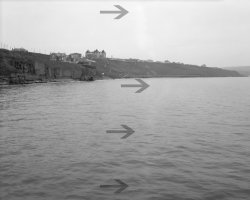- Joined
- Aug 6, 2016
- Messages
- 1,586
I have noticed on two of the negatives I exposed on a recent day out to Whitby a bright line down the centre.
This one is the worse.
My Thoughts:
Whats Your Thoughts:

This one is the worse.
Film: FomaPan 200
Developer: Kodak XTOL Replenished (developed for 6.5 minutes)
3 minute pre-soak in water
Tank Processed in SP-445: 1 minute continuous agitation, 5 slow agitation every minute thereafter.
Water Stop Bath for 1 minute followed by 5 minute fix in Ilford Rapid Fixer for 5 minutes
5 minute final rinse followed by Kodak PhotoFlo
Developer: Kodak XTOL Replenished (developed for 6.5 minutes)
3 minute pre-soak in water
Tank Processed in SP-445: 1 minute continuous agitation, 5 slow agitation every minute thereafter.
Water Stop Bath for 1 minute followed by 5 minute fix in Ilford Rapid Fixer for 5 minutes
5 minute final rinse followed by Kodak PhotoFlo
My Thoughts:
Light leak from dark slide - light entering from the side?
Something gone wrong during development?
Something gone wrong during development?
Whats Your Thoughts:



